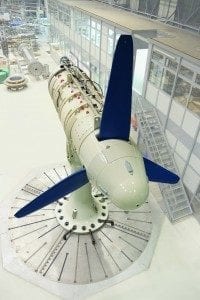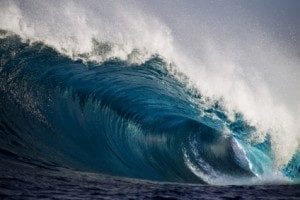 Wave and tidal power technologies represent a huge opportunity to create reliable, clean energy. While these technologies are currently in various stages of research, development and deployment, industry estimates have pegged US wave potential at 90GW. In Florida alone, an estimated 4 to 10GW of potential is thought possible, according to a University of Florida study.
Wave and tidal power technologies represent a huge opportunity to create reliable, clean energy. While these technologies are currently in various stages of research, development and deployment, industry estimates have pegged US wave potential at 90GW. In Florida alone, an estimated 4 to 10GW of potential is thought possible, according to a University of Florida study.
To focus on these new technologies, the National Hydropower established the Marine Energy Council. The council collaborates with NHA’s standing committees to focus attention on the potential growth opportunities of emerging technologies, share information among industry members, and provide a forum in which to discuss the various challenges ocean, tidal, hydrokinetic and emerging water technologies face.
The council focuses on:
- Securing vital funding for research and development through the Department of Energy’s Water Power Program and providing input on how best to leverage those investments to further the marine energy sector;
- Supporting legislative efforts to secure the long-term inclusion of marine energy technologies in federal incentives for renewable energy including the Production Tax Credit, the Clean Renewable Energy Bonds (CREBs) program and others;
- Recognizing these new technologies in clean energy programs, such as a Renewable Portfolio Standard;
- Developing a smart and expeditious permitting scheme;
- Creating or increasing research, demonstration and development programs at other federal agencies that fund and support these emerging technologies; and,
- Promoting the important role emerging technologies can play in meeting increased demand for clean energy.
Wave power
 The unceasing movement of ocean waves creates a continually available and predicable power source that has an estimated technical potential in the U.S. of 90GW. Among other benefits, oceans are close to major population centers that need electricity most, while the potential wave power installations have a low visual impact and no fuel costs.
The unceasing movement of ocean waves creates a continually available and predicable power source that has an estimated technical potential in the U.S. of 90GW. Among other benefits, oceans are close to major population centers that need electricity most, while the potential wave power installations have a low visual impact and no fuel costs.
With a range of innovated technologies under development, wave power energy conversion devices can capture energy located on the ocean shoreline, near the shore or floating offshore. Technologies in development include:
- Point absorber technologies use a float that sits on top of the waves, generating electricity via an attached, moored conversion device.
- Attenuators are long floating structures located parallel to the direction in which waves are traveling. When waves cause the water to rise and fall to different heights along the structure, it flexes and those flex points are connected to hydraulic pumps or other converters that capture the energy.
- Overtopping technologies have been tested both for onshore and offshore applications. A reservoir is filled as waves deposit water, which is then released, driving a turbine or other conversion device.
Tidal Energy
While wave technologies capture energy from individual waves, tidal technologies tap into the predictable — and powerful — ocean tides, while other hydrokinetic technologies can capture the energy in natural river flows. Tidal barrages, undersea tidal turbines and other technologies are currently under development, particularly in areas with high tidal ranges — the difference in water levels between low and high tide — which are ideal for this type of marine hydropower.
Simple tidal energy technologies like tide mills have been used for hundreds of years, but new technologies in this area offer great promise for wider deployment. Among them are:
- Barrage technology funnels water delivered ashore by tides into an estuary, and that water is then emptied and sent through turbines to generate power.
- Tidal stream generators use water to power turbines in the same way that wind turbines generate power from moving air.
- Instream hydrokinetic technology uses the natural river flow to generate electricity without using dams.


